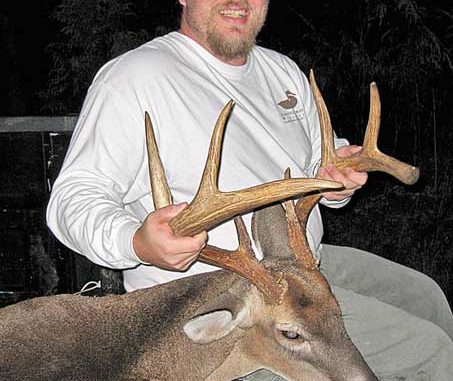
As a buck’s antler velvet begins to lose its blood supply and dry out at the tail end of the month, deer hunters need to review objectives and historical harvest data, then decide what their goals will be for the season. Throughout modern America, the sport of deer hunting is becoming more of a science, with greater emphasis on the scientific method.
With the growing membership of Quality Deer Management Association (QDMA) and other organizations that promote trophy deer management, the average hunter is after a mature buck and is willing to divert the younger buck from certain death — part of the routine harvest.
It takes three basic components to develop a trophy buck: proper nutrition, favorable genetics, and age. Genetics is the toughest consideration, practically impossible to control and the side of the triangle of the least concern, since no real action can be undertaken to improve them. Nutrition can be improved and controlled with habitat management, food plots, and mineral/nutritional supplements. Professionally speaking, controlling the age structure is critical and will quickly become the limiting factor to producing trophy bucks on a managed property. The age structure is completely controlled by the harvest, making harvest recommendations the controlling factor in trophy buck development.
QDMA preaches management guidelines with four basic cornerstones: herd management, habitat management, hunter management, and herd monitoring. Three of the four cornerstones are directly related to the age dynamics.
Bucks will never become mature, with desirable antler and body characteristics, at 3½ years old or younger. In North Carolina and South Carolina, bucks have an average life-expectancy of 18 months: a year-and-a-half. Property managers or hunt clubs must extend the life of their bucks for them to reach trophy status. They routinely set antler standards by number of points, width of spread or a combination of both. While these standards protect smaller bucks with underdeveloped antlers, younger bucks with good nutrition and genetics are penalized for growing nice racks and making the harvest cut.
The rule-making process fails to control the most-important factor: the number of bucks harvested. Too many young bucks with nice antlers and potential to be record-sized make the cut and end up in the freezer. Many clubs just kill too many bucks, period! These failed attempts to trophy management spoil the future on these lands.
Before the season begins, wildlife managers and hunters should consider limiting the number of bucks killed, with season bag limits per person and per club (or farm) before setting antler-size limitations. The overall buck harvest should be the most-important factor in setting harvest prescriptions. While buck harvests are the primary goal for most hunters, doe harvests should also be a part of the overall objective. Harvest statistics and other detailed data should be analyzed, and harvest recommendations should be prescribed before Opening Day. When making harvest recommendations, especially with doe harvests, tracts smaller than 1,000 to 1,500 acres are hard to control since deer will move on and off these smaller properties. However, neighboring clubs should unite and form cooperative management to control and manage their herd.
Keep good records
One of the most-important aspects to managing for trophy whitetails is herd management and monitoring. When developing recommendations for controlling the dynamics of a herd, detailed harvest records are critical. Hunt clubs and property managers should keep good records of all deer killed, including bucks and does. Require all bucks to be photographed, weighed, jawbones removed, and antlers measured.
While antler characteristics and body size are important, overall health of the deer should also be noted. Inspect the fat around the kidneys to determine if adequate food is available. Also check all does for fetuses and measure the length of fetuses to determine when does were bred.
Harvest recommendations can only be prescribed after previous year’s harvests are analyzed and objectives are reviewed. Detailed records will provide crucial data to grow big bucks and reach your objectives.
Drill brown-top millet in impoundments this month
Any duck hunter understands why baiting for ducks is illegal. Waterfowl are definite suckers for energy-rich groceries soaked in 18 inches of water. Luckily, farm and wildlife managers can plant choice seed crops, grow them to maturity, and then flood them to entice wintering waterfowl without the worry of 24 months in the slammer, losing their hunting license, and spending the kids’ college fund on hefty fines.
Federal baiting laws are conditioned to punish the lazy and reward the diligent. Although longer-maturing crops have been planted earlier in the summer or spring, brown-top millet is one of the best attractants available to lure wild ducks into range, and the planting time is now.
Originally from southeast Asia, brown-top millet is an all-around homerun for all game species, but is highly-recognized as a winner when planted in waterfowl impoundments.
As with most millet species, brown-top is roughly 12-percent fat, 4-percent crude protein, is packed with B vitamins and is rich in niacin. While most food-plot sites require liming before planting, brown-top is tolerant of low fertility and acidic soils, but a healthy dose of fertilizer before planting has noticeable benefits. All millets respond well to generous doses of nitrogen and phosphorus (200 to 250 pounds per acre of 16-4-8).
With the early teal season approaching, August is about the last month to ensure a maturing crop of brown-top by the time the birds arrive. Since brown-top matures and starts producing heavy-seed yields within 60 days of germination, early to mid-August plantings are preferred to ensure a full crop for the early arrivals. Although most waterfowl take their time during their journey down the eastern seaboard, a heavy frost will terminate growth as well. Mid- to late-September plantings may not get the chance to reach their potential.
Planting rates vary depending on seeding method. If using a seed drill, 20 pounds per acre is sufficient, but 30 to 40 pounds per acre should be planted if broadcasted. Seed should be covered with one-quarter to one-half inch of soil for adequate germination. Careful site selection, soil preparation, seed choice, and planting method is extremely effective for creating favorable conditions for wintering waterfowl and a duck hunter’s dream.
Monitor water clarity, prevent fish kills in ponds
The period from July through September is widely known for fish kills across the country, especially in the Southeast’s hurricane belt.
“Hurricane weather” with its long, hot days and extended cloud cover, can be brutal to fish populations in ponds. Water temperatures peak in August, and dissolved-oxygen levels become critically low. Phytoplankton and algae reproduction peaks, cranking out oxygen on sunny days, but consuming much more oxygen at night and on cloudy days.
Water clarity in fertilized ponds or ponds susceptible to agriculture runoff should be monitored closely. Visability from the surface should not be less than 12 inches. If it’s less than 12 inches, and extended stormy weather is approaching, a fish kill is eminent, and the pond is in danger. To be safe, fertilization should be discontinued during the month of August unless water clarity is greater than 18 inches.
Other considerations to prevent fish kills include excluding livestock from wading in the pond and monitoring the surface for stressed fish surfacing and gulping air during early-morning hours. If possible, aerate with an irrigation pump or install an electric fountain. Summer kills can easily decimate a healthy population of fish.

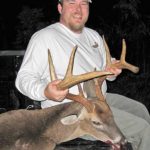
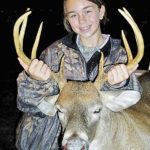
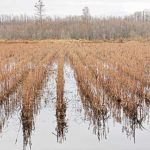
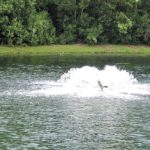



Be the first to comment